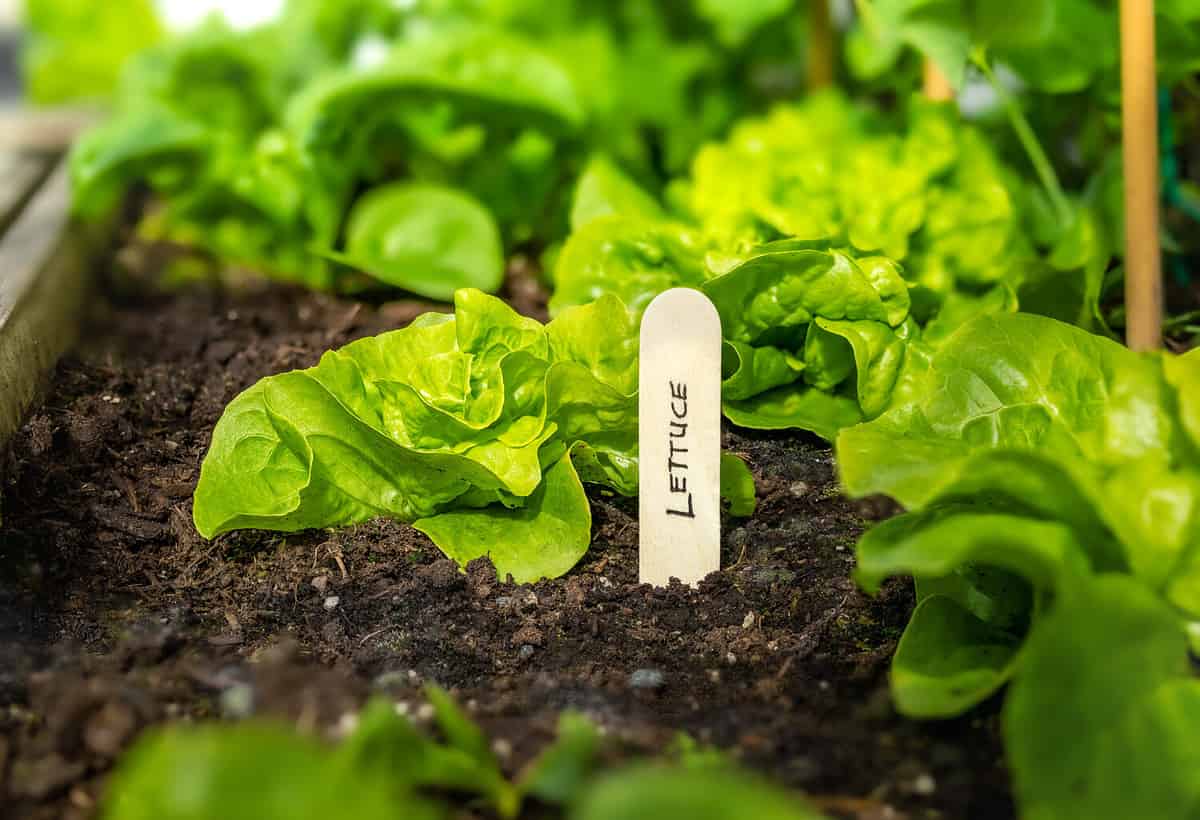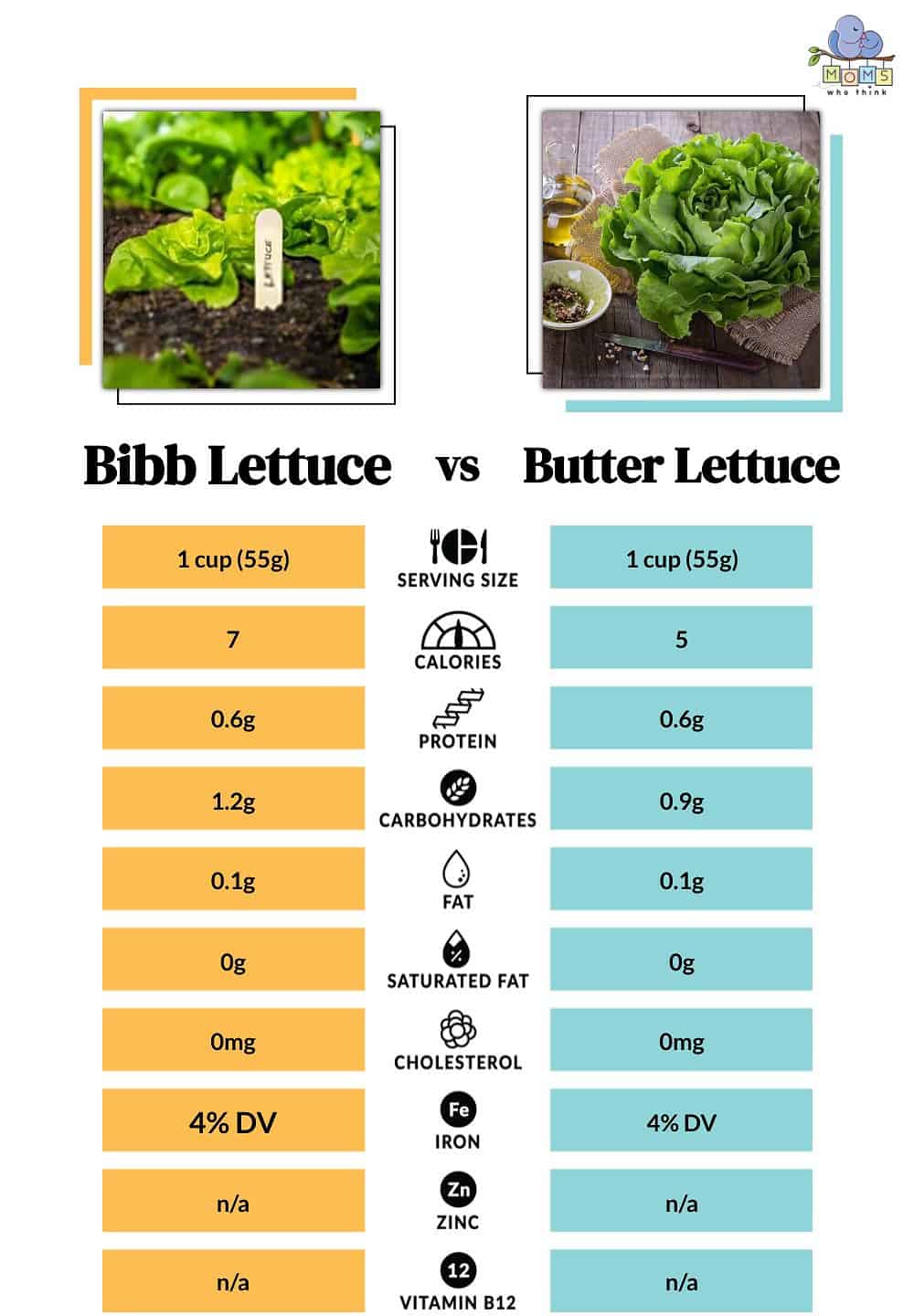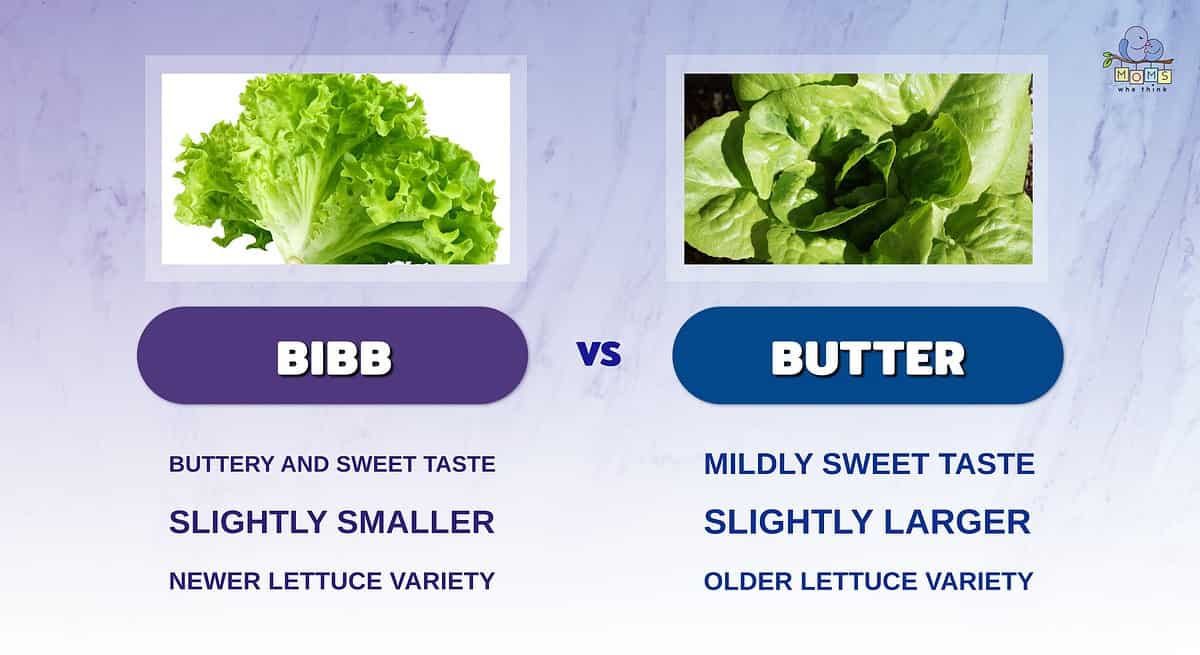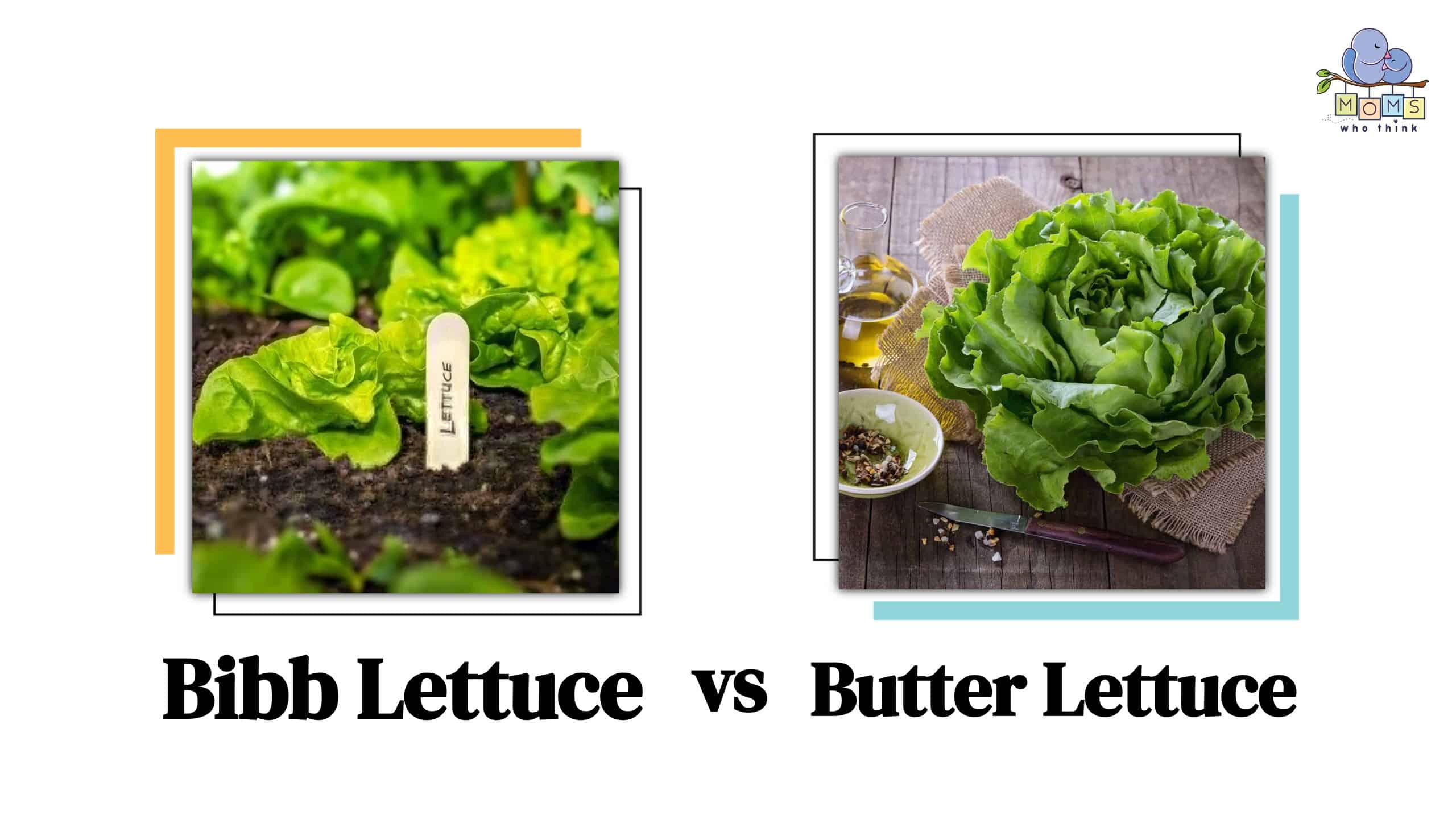When most of us go to the grocery store to purchase lettuce, we go for what looks green, and we throw it in our cart. However, you may not realize that there are actually several varieties of lettuce, and two of them are bibb and butter lettuce. The differences between these two varieties include the fact that butter lettuce is larger and is more frequently used for wrapping foods instead of being used in salads, and they have slightly different flavors. Let’s discuss the debate of bibb lettuce vs. butter lettuce further.
Bibb Lettuce vs. Butter Lettuce: What are the Differences?

©sophiecat/Shutterstock.com
The truth is that the battle of bibb lettuce vs. butter lettuce is not as epic as you may think because the reality is that the two varieties are more alike than they are different. However, they do have some unique qualities between each other.
Where They Originate
Different varieties of the same product often come from different places, and the same goes for lettuce. Butter lettuce was first found in Ancient Egypt and the Middle East way back 5,000 years ago. Bibb butter originated as a form of Boston lettuce, and it was cultivated by veteran and lawyer John Bibb. However, it was first called limestone lettuce before it was officially named after John. In many cases, when you go to the grocery store, you’ll see bibb lettuce, but remember that it’s a form of butter lettuce.
Size
Generally speaking, butter lettuce is larger than bibb butter by half a size. Bibb lettuce is smaller and also more fragile. It’s typical for a truck to deliver a shipment of bibb lettuce and have several pieces be bruised. However, when sold in the store, there are typically more good than bad.
- The must-have convenient reference guide for every home cook!
- Includes more than 8,000 substitutions for ingredients, cookware, and techniques.
- Save time and money on by avoiding trips to grab that "missing" ingredient you don't really need.
How It’s Harvested
Both bibb and butter lettuce are grown and selected in slightly different ways. Butter lettuce does great in cooler weather and temperate climates. You’ll typically see it growing all across the United States during the spring and fall, and it needs full sun. It also does well in loose soil. Butter lettuce grows to full maturity in about 65 days, but its leaves are still edible after 30 days.
Bibb lettuce is a little different because although butter lettuce does best in well-drained soils, the bibb variety does a bit better in cool and moist climates. It also prefers full sun, and gardeners often choose to grow it in greenhouses. Also, bibb lettuce is much more tolerant of heat, but it grows best during the spring and not as well during the summer. Just like with butter lettuce, bibb lettuce is typically ready in about 60 days, but you can eat the leaves earlier than that.
Flavor
Despite its name, butter lettuce doesn’t really have a buttery flavor, but it has a silky texture that makes it smooth like butter. Many people also think that this type of lettuce tends to melt in their mouths. There is some sweetness there, which is why it often goes better as a compliment for other foods than being in a salad. People often pair it with cheeses and chutney and use it to wrap meats and make sushi. However, it also works in salads, and you’ll often see it on your burger.
Oddly enough, bibb lettuce does have more of a buttery and sweet taste than butter lettuce, but it does taste similar to butter lettuce. Most of the flavor in bibb lettuce is in the stems. Many chefs will often cut off the stems and cook them by themselves as an ingredient in a dish. Those leaves work great as a base for salads and soups. Bibb lettuce also does well with fish, especially tuna. It also pairs well on sandwiches with contrasting flavors, like mustard.
Bibb Lettuce vs. Butter Lettuce: Nutritional Value
As you can imagine, lettuce is a very healthy ingredient which makes it relatively harmless when added as a complement to dishes. It won’t make you gain a lot of weight. It’s full of vitamins, including C, A, and K. In a comparison of one cup of lettuce, butter lettuce has just fewer calories and fewer carbs. Other than that, the nutritional factors are balanced, as you can see in the chart below.

There’s a reason why many people eat salads when they’re trying to lose weight, and it’s because it has incredible benefits. Whether you’re eating bibb lettuce vs. butter lettuce, the vitamin K contained in it is essential for bone strength and for reducing your chance of bone fractures. Lettuce also contains vitamin A, which is essential for eye health. When you’re older, lettuce and vitamin A can also prevent the chances of cataracts and macular degeneration.
Although it's tasty and leafy, lettuce is made up of 95% water. Because of that, lettuce is essential for hydrating your body. There’s also research that eating lettuce can help you to sleep better at night because of the lactucarium it contains, which has a structure similar to opium which works as a sedative.
What are Substitutes for Bibb or Butter Lettuce?
Since both butter and bibb lettuce have a similar flavor, you really can’t go wrong with either option. However, if you like the texture but you’re not crazy about lettuce in general, then there are alternatives you can eat as well.
Calendula
You can turn to an edible flower like calendula if you want a texture similar to lettuce. Note that the leaves of calendula have a stronger flavor, so you need to eat it in moderation. Like lettuce, calendula has great healing properties.
Rocket/Arugula
One of the most popular substitutes for either bibb or butter lettuce is arugula. Also known as rocket, this has a distinct peppery taste, so add it to your pizza in moderation. Many people also put rocket as a topping on pizza.
Kale
Another common substitute for lettuce is kale, which grows all year round in different climates. There are many different varieties of kale, so you have your choice of flavors and textures. Kale is great in sandwiches and salads.
Rainbow Chard
If you’re looking for a versatile substitute to lettuce, then go for rainbow chard, which grows during the colder months of the year. This chard is tasty in salads, and it’s also a great way to make wraps.
- The must-have convenient reference guide for every home cook!
- Includes more than 8,000 substitutions for ingredients, cookware, and techniques.
- Save time and money on by avoiding trips to grab that "missing" ingredient you don't really need.
Cabbage
Many people happily swap out their lettuce for cabbage because they prefer the crunchier taste. It’s a great alternative, and a little cabbage goes a long way.
Dandelion Greens
Technically an edible weed, dandelion is still a great substitute for lettuce, and it’s delicious in salads. Just be careful when picking them so that you don’t pick those that have been sprayed with chemicals.
Chickweed
Also known by its technical name Stellaria media, chickweed is another of those edible weeds that you’re likely to see during the winter. Chickweed has smaller leaves that offer a mild flavor, so they add a subtle taste to your salads.
Parsley
Many people also turn to parsley because it’s a leafy green that’s also healthy. You can chop up the parsley and spread it over salads.
Watercress
Watercrest has a strong peppery flavor that adds a great element to salads and sandwiches. You can also mix watercress with other greens on this list to tone down the flavor. Like dandelions, you need to be careful to not pick watercress that was sprayed with chemicals.
Conclusion

- Bibb lettuce, ironically, has a more buttery taste compared to butter lettuce. Both lettuce types have a sweet flavor, making them versatile additions to many dishes.
- Bibb lettuce is just a bit smaller than butter, which may matter to you if you need a very specific amount of lettuce for something.
- Butter lettuce has been around for thousands of years, while bibb lettuce is only about 200 years old.
As you can see, there aren’t many huge differences in the debate of bibb lettuce vs. butter lettuce. Either one is a tasty and healthy ingredient in your salads and sandwiches, and if you don’t love it, then there are alternatives. Look for either option in your supermarket and have a great meal.
Need a recipe that you can use either of these lettuce varieties in? Try this Ultimate Chicken Sandwich:
PrintUltimate Chicken Sandwich
- Yield: 6 servings 1x
Ingredients
6 boneless skinless chicken breast halves (4 ounces each)
1 cup buttermilk
½ cup reduced fat biscuit/baking mix
½ cup cornmeal
1½ teaspoons paprika
¾ teaspoon salt
¾ teaspoon poultry seasoning
½ teaspoon garlic powder
½ teaspoon pepper
¼ teaspoon cayenne pepper
6 onion or Kaiser rolls, split
6 lettuce leaves
12 tomato slices
Instructions
1. Flatten chicken to ½ inch thickness.
2. Pour buttermilk into a large resealable plastic bag; add chicken. Seal bag and turn to coat; refrigerate for 8 hours or overnight.
3. In a shallow bowl, combine the biscuit mix, cornmeal, paprika, salt, poultry seasoning, garlic powder, pepper and cayenne. Remove chicken one piece at a time, allowing excess buttermilk to drain off. Discard buttermilk. Coat chicken with cornmeal mixture; place in a 13 in. x 9 in. baking dish coated with cooking spray.
4. Bake, uncovered, at 400° for 8 to 12 minutes on each side or until a meat thermometer reaches 170° and coating is lightly browned. Serve on rolls with lettuce and tomato.
Nutrition
- Serving Size: One sandwich
- Calories: 372
- Sodium: 759mg
- Fat: 7g
- Saturated Fat: 3g
- Carbohydrates: 46g
- Fiber: 3g
- Protein: 31g
- Cholesterol: 63mg


